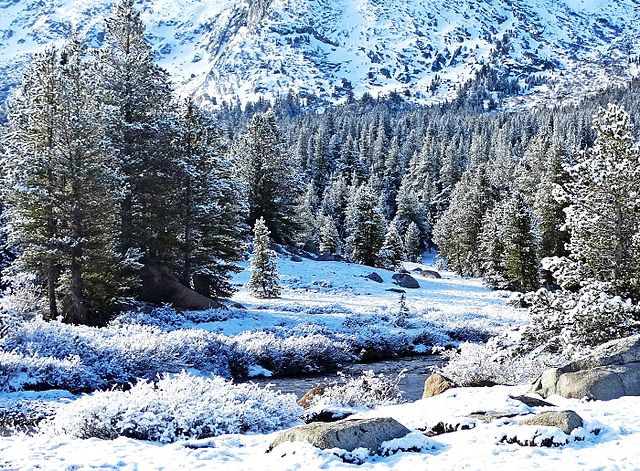A severe blizzard has enveloped the Sierra Nevada region, unleashing chaos as it prompted the closure of a critical interstate stretch, ski resorts, and Yosemite National Park while leaving thousands in California and Nevada grappling with power outages. The storm, described as the season's most formidable, unleashed gusty winds and heavy rainfall across lower elevations, significantly impacting visibility and transportation.
Interstate 80, a vital artery spanning 100 miles from the California-Nevada border to near Emigrant Gap, California, was shuttered due to hazardous conditions such as "spin outs, high winds, and low visibility," as per California authorities. The closure underscores the storm's intensity, which has not only disrupted travel but also poses significant risks to life and property.
The blizzard's ferocity was further highlighted by the National Weather Service in Reno, predicting up to 10 feet of snow in some Sierra regions. This forecast signals an unprecedented level of snowfall, contributing to "high to extreme avalanche danger" across the central Sierra, including the greater Lake Tahoe area. Such conditions exacerbate the challenges faced by residents and authorities alike, emphasizing the storm's potential to cause widespread damage and disruption.
The impact on the power grid has been substantial, with Pacific Gas & Electric reporting around 24,000 households and businesses without electricity as of Friday night. This figure underscores the storm's capacity to cripple essential services, further complicating response efforts and heightening the risk for those affected.
Yosemite National Park's closure, announced to extend through at least Sunday noon, alongside the shutdown of numerous ski resorts, reflects the broader implications of the blizzard on recreational and conservation areas. The decision to close these venues, often bustling with visitors, highlights the need for safety and caution amidst such extreme weather conditions.
Amidst the chaos, a unique incident unfolded in Madera County, where a tornado touched down, causing damage to an elementary school. This event, albeit separate, adds to the overall climate anomaly witnessed in the region, indicating a broader pattern of unusual and severe weather phenomena.
The storm's timing and intensity have led some ski enthusiasts to rethink their plans, with Daniel Lavely, an avid skier, opting out of the treacherous conditions despite holding a season pass at a Tahoe resort. His decision reflects a broader sentiment of caution and concern among residents and visitors alike, wary of the gale-force winds and the risks they entail.
Despite the dire circumstances, some residents, like Chris Slowinski and his wife Cathy Ludwig, have prepared for the worst, equipping themselves with generators and essentials to weather the storm. Their resilience and preparedness exemplify the community's spirit in facing such daunting natural challenges.
As the blizzard continues to rage, the focus remains on ensuring the safety of those affected, mitigating the storm's impacts, and restoring normalcy in the wake of this extraordinary weather event. The community's response, coupled with the efforts of emergency services and authorities, will be crucial in navigating the challenges posed by this historic blizzard in the Sierra Nevada.






